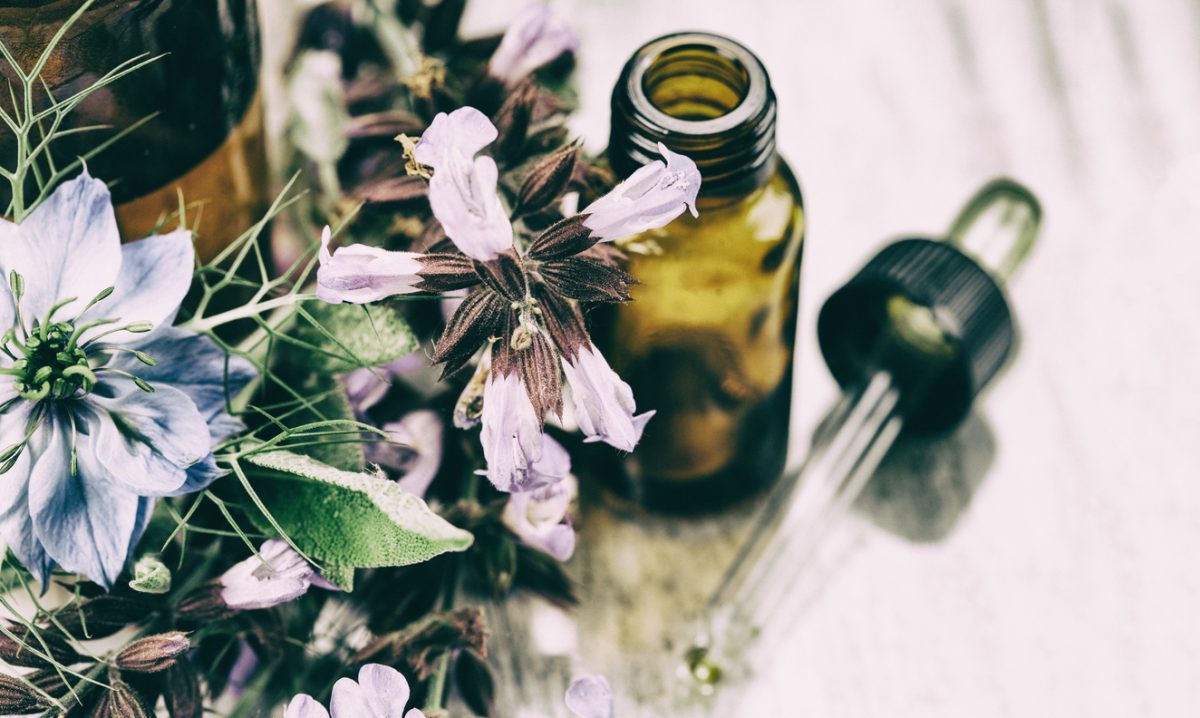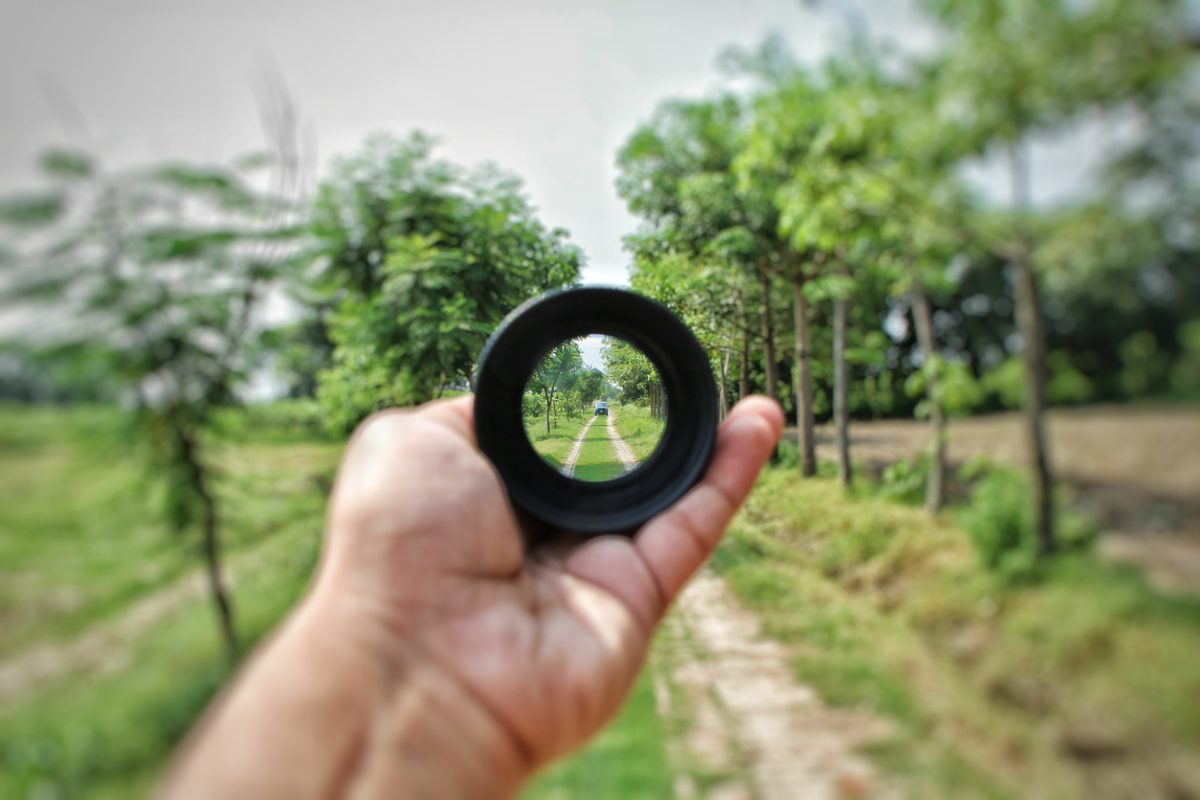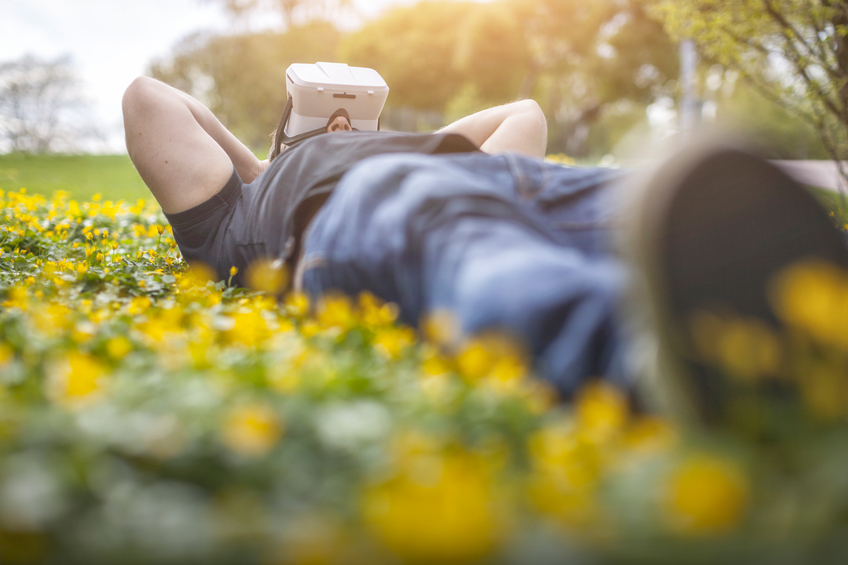
Calgon, take me away! If you were born before 1980, it’s very likely that you remember this phrase from an iconic commercial for bath products. The entire premise of the commercial was that Calgon’s finely-scented toiletries could help you escape the stress of everyday life, letting go of your cares and finally getting a chance to relax. All you had to do was add a bit to your bath and you’d be carefree and sane once again. Oh, if it were only that easy…
Calgon’s claims may have been overstated, but they were rooted in the use of essential oils via aromatherapy. Used for thousands of years in multiple cultures for healing and relaxation, essential oils may very well hold benefits for those experiencing stress and stress-related symptoms. When the right essential oil is used, it can invoke calmness, focused energy, or even sleepiness, all without the need for drugs or medication.
Want to give essential oils a try? Let’s break down the basics and learn which oils benefit recovery-related symptoms best.
One caveat: be sure to test your tolerance to them in advance; a drop on the inside of the wrist left on for 24 hours is best. If you develop any itching or sneezing, essential oils may not be right for you. If all goes well, you can move forward with their use safely.
Lavender Oil for Insomnia
Stroll down your local grocery store’s laundry aisle and you will probably notice one main thing: lavender-scented everything. This is especially true for infant detergents, and with good reason. Lavender oil seems to have a soothing and calming effect on the body, inducing relaxation and even sleepiness in some people. If you’ve been struggling with insomnia, it may be just the thing you need to soothe yourself to sleep without drugs.
To use lavender oil, start by buying an essential oil product that contains authentic lavandula angustifolia oil (synthetics often don’t carry the same benefits). Try placing a diffuser beside your bed; turn it on only at night, starting about an hour before you plan to sleep. Or, add a few drops of lavender essential oil to a dry washcloth and toss it into the dryer with your pajamas. The subtle, flowery scent will lull you into relaxation gently without leaving you groggy the next morning.
Vetiver Oil for Anxiety Attacks
Panic and anxiety are close bedfellows in addiction and recovery. Very often, sobriety increases these symptoms because addicts were self-medicating them away in the first place. Re-learning how to deal with these symptoms in a positive manner can be extremely challenging, especially if you’ve opted to tackle the problem without medication. Although it’s not by any means a cure for Panic Disorder (PD) or Generalized Anxiety Disorder (GAD), some patients have found benefit in smelling vetiver oil, sourced from the Chrysopogon zizanioides plant, when anxiety levels rise.
Vetiver oil carries an earthy, wholesome scent that can be very grounding and calming, much like patchouli, though it isn’t nearly as overwhelming and strong. It has an ever-so-slight citrusy finish that will also help you to focus if you’re experiencing dissociation or derealization, both of which are very common in anxiety.
To use vetiver oil, you can infuse it into the air or rub it onto your skin. If you choose the latter, you must dilute it as it can cause irritation when applied directly. The best way to do this is to add two or three drops of vetiver oil per tablespoon of cold-pressed organic coconut oil. Mix this together until combined and then massage a few drops into your hands.
Ylang-Ylang, Bergamot & Lavender for Stress
A study from 2006 points to the benefits a mixture of ylang-ylang, bergamot, and lavender may have on a stressed-out cardiovascular system. Hosted by the Geochang Provincial College, the study evaluated whether or not inhaling a mixture of these essential oils could effectively reduce hypertension in patients.
The results of the study were quite positive; blood pressure, pulse, subjective stress, state anxiety, and serum cortisol levels all showed at least some improvement in patients who inhaled the mixture regularly over time.
You can make your own version of this formula right at home if you have the right essential oils. Start with 5 to 10 drops of each essential oil. Add them to 1/4-cup of cold-pressed organic coconut oil, melted at room temperature. Then, use an oil diffuser to distribute it throughout the air before heading out to work, after a long day, or whenever stress levels are high.
Alternatively, fill a small cosmetic tub with the mixture, chill it in the refrigerator, and use the cool, calming solution as a massage oil on your pulse points when you feel yourself becoming stressed.
Wintermint & Spearmint for Stress Fatigue
These two crisp, minty essential oils are used extensively by aromatherapists to reduce stress-related fatigue. Wintery and bright, both scents wake you up without having the edgy nervousness often associated with caffeine and other herbal stimulants, so there are effective no side effects (save maybe smelling like a candy cane now and again).
For stress-related fatigue, using a facial cream or wash infused with minty essential oil first thing in the morning can help. The gentle tingling sensation stimulates the senses, and may also brighten up tired eyes and reduce under-eye circles. Rubbing a bit of peppermint oil into your hands midway through your workday may also help you to stay focused and awake when under pressure, letting you get through your day more effectively.
Peppermint for Pain
If you are recovering from opiate addiction, or if you struggle with a chronic pain condition, you likely understand how pain can exacerbate your stress levels. In fact, pain is a significant contributor to relapse, especially for those whose drug of choice happened to be an opiate drug. It goes without saying, then, that reducing pain in natural ways will also help to reduce your stress levels over time. Applying peppermint to the skin may help.
What’s so special amount mint? The answer has to do with the fact that all three oils induce the same physiological response – it reduces signals sent to the brain by skin receptor TRPM8. This handy little guy is directly responsible for transmuting pain sensations along the nerves and into the brain, where they are then translated into “ouch.”
When triggered, either by cold water, ice, or mint essential oils, TRPM8 becomes quieter, and sends fewer signals along in the first place. That can translate into lower pain levels for many patients, especially during withdrawal or in conditions like headaches, migraines, fibromyalgia, arthritis, and diabetic neuropathy. Essentially, when you apply peppermint essential oil, you’re telling TRPM8 receptor to use its indoor voice instead of screaming.
Staying focused and on track in recovery means paying close attention to your stress levels. Having the right tools will help you to reduce stress and decrease the likelihood of relapse, slips, and bad decisions made in the heat of the moment. Whether it’s essential oils or weekly meetings with your therapist, what matters most is your dedication to staying sober and willingness to work towards a healthier life. Even if essential oils don’t help you in the ways outlined above, they can still benefit you just by smelling lovely in the first place.




